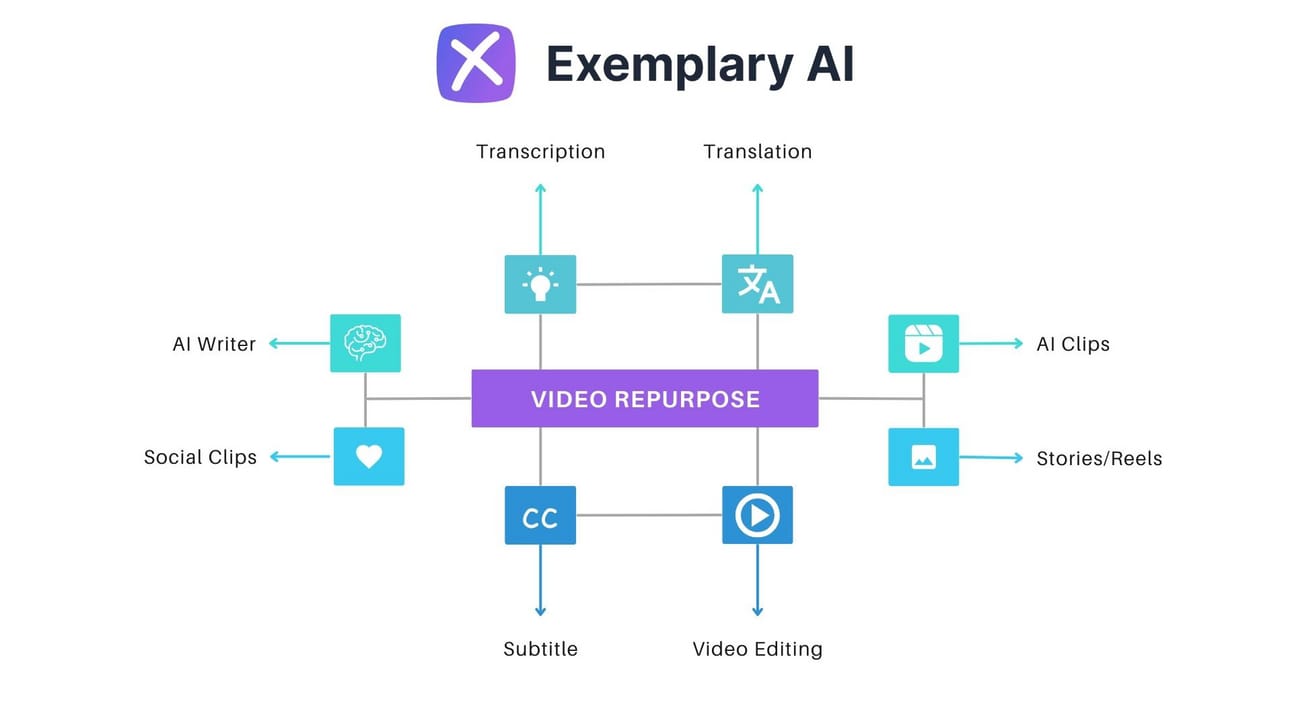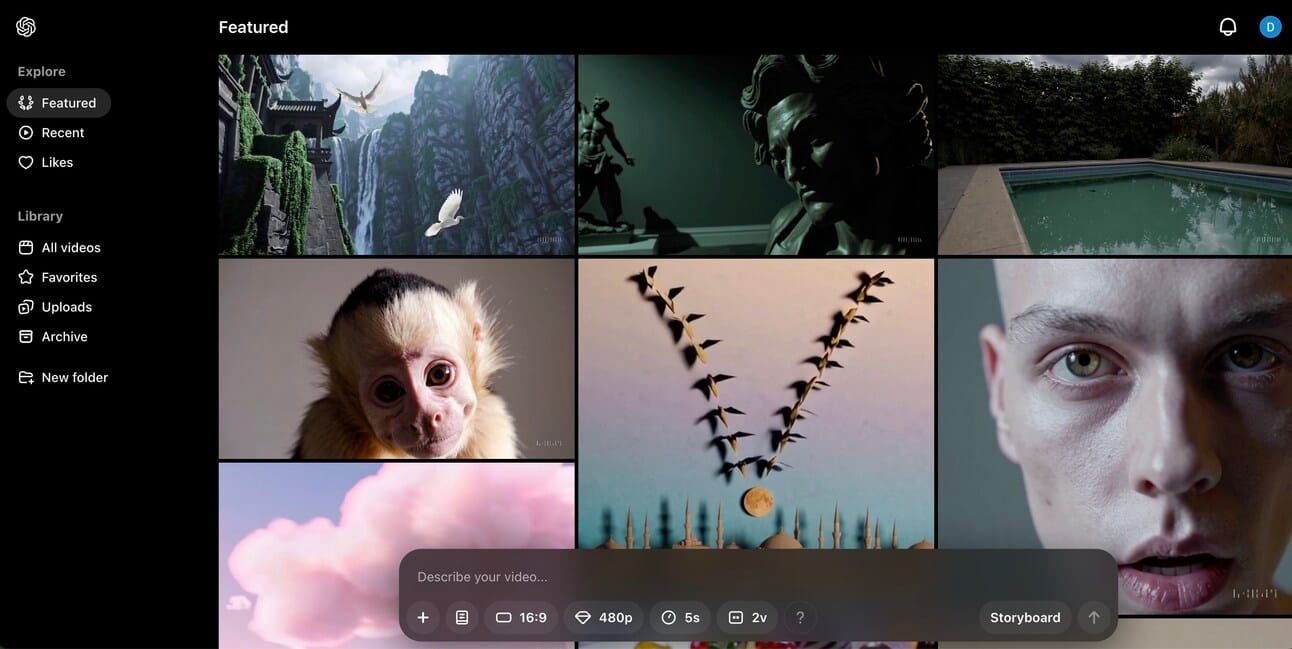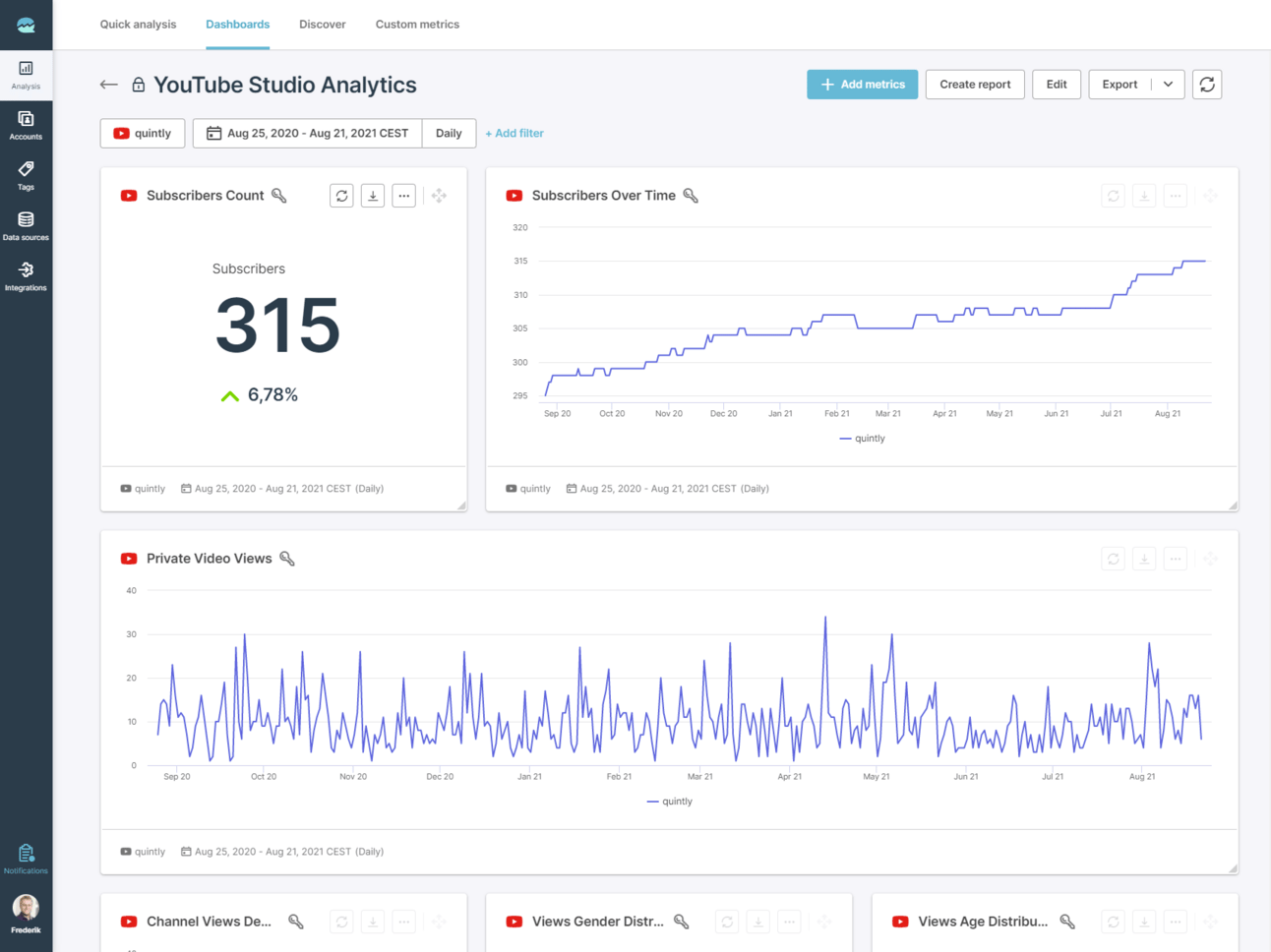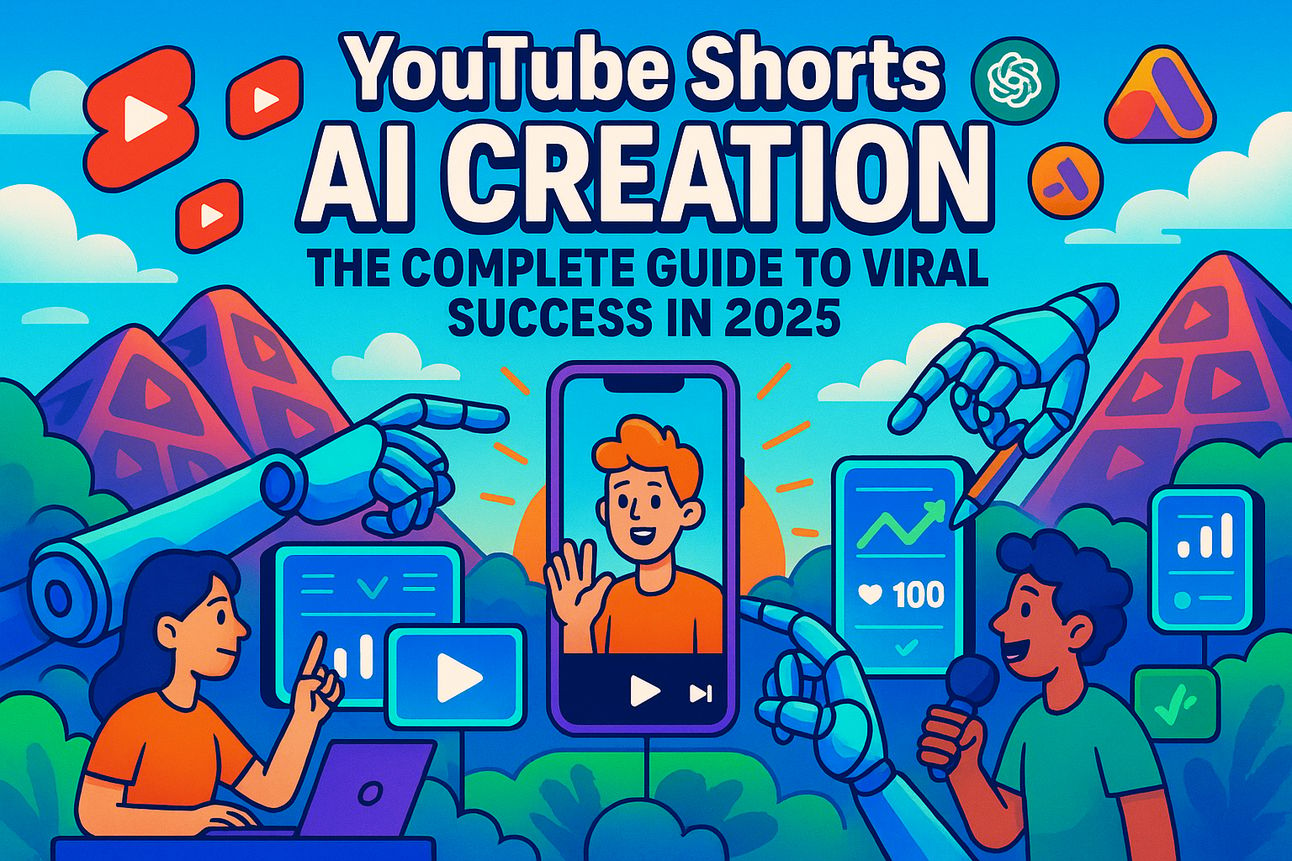Look, I'm not going to pretend that making viral YouTube Shorts is rocket science. It's not. But what I will tell you is that if you're still editing videos like it's 2019, you're basically trying to compete in Formula 1 with a shopping trolley.
The game has changed, and AI is the new rulebook. YouTube Shorts AI creation isn't some fancy tech buzzword – it's the difference between spending 6 hours making one video and cranking out 10 viral shorts before lunch.
Here's the thing that'll blow your mind: AI-generated shorts are getting 67% more engagement than traditional content. Not because they're better (though they often are), but because creators using AI can test, iterate, and optimize at speeds that would make your head spin.

Why AI-Generated YouTube Shorts Are Absolutely Crushing It
Right, let's cut through the noise. You know what separates successful creators from the ones moaning about "the algorithm"? They understand that YouTube Shorts get 79 billion daily views. That's not a typo – 79 billion. Every single day.
Now, here's where it gets interesting. Traditional content creators are still stuck in the old workflow: brainstorm, script, shoot, edit, publish, pray. Meanwhile, AI creators are over here running circles around them.
The beauty of YouTube Shorts AI creation is that it removes the bottlenecks. You know, those parts where you sit staring at a blank screen wondering what to create next. AI doesn't get creative block. It doesn't have off days. It just creates.
But here's what most people get wrong about AI content creation – they think it's about replacing creativity. Wrong. It's about amplifying it. AI handles the grunt work so you can focus on what actually matters: connecting with your audience.
The AI Tools That Are Actually Worth Your Time
Let me save you some time. You don't need 47 different AI tools. You need the right ones. Here's what actually works:
InVideo AI is your starting point. It's like having a video editor who never sleeps, never complains, and produces content faster than you can say "monetization." Perfect for beginners who want professional results without the learning curve.
OpusClip is the tool for content repurposing. Got a 20-minute podcast? OpusClip will chop it into 15 viral shorts faster than you can order a coffee. It's genuinely scary how good it is at finding the golden moments in your content.
Pictory handles the heavy lifting for text-to-video conversion. Feed it a blog post, and it'll create a complete video with relevant footage, transitions, and timing. It's like having a production team in your pocket.
For the more advanced creators, Runway is pushing boundaries that didn't exist six months ago. We're talking about AI that can generate video from text descriptions. Science fiction? Nope. Tuesday morning.

The Three Methods That Actually Generate Results
Alright, enough theory. Let's get practical. There are three proven methods for YouTube Shorts AI creation, and I'm going to break them down without the usual marketing fluff.
Method 1: The From-Scratch Approach
This is where you start with nothing but an idea and let AI build everything. Think of it as the creative person's dream workflow.
Start with strategic prompting. Don't just type "make a fitness video." That's like asking a chef to "make food." Be specific: "Create a 45-second video revealing 3 morning habits that boost energy, targeting busy professionals, with a motivational tone."
Use ChatGPT or Claude for script generation. Apply the Hook-Value-CTA formula. Your hook needs to grab attention in the first 3 seconds. Your value needs to be actionable. Your call-to-action needs to be clear.
Here's a pro tip: Keep sentences under 15 words. Include natural pauses for AI voiceover flow. AI voices are getting incredibly realistic, but they still need proper pacing.
Method 2: The Repurposing Machine
This is where AI becomes your content multiplication tool. One piece of long-form content becomes 10+ shorts. It's efficiency on steroids.
Tools like OpusClip and Vizard.ai analyze your content for viral potential. They identify the moments that will hook viewers, extract them, and package them perfectly for shorts format.
The key here is understanding what makes content "choppable." Educational content works brilliantly. Storytelling content is gold. Rants and opinions? Absolute dynamite for shorts.
Method 3: The Trend-Riding Strategy
This is where you become a viral detective. Use AI to identify trending topics, then create content that rides those waves.
Google Trends becomes your best friend. Monitor viral hashtags. Analyze competitor content. Set up alerts for industry keywords.
But here's the secret sauce: don't just copy trends. Put your spin on them. AI can help you identify the trend, but your perspective makes it unique.
The Optimization Strategies That Separate Winners from Wannabes
Creating content is just the beginning. Optimization is where the magic happens. And AI makes optimization possible at scale.
Thumbnail optimization is crucial. AI can generate dozens of thumbnail variations in minutes. Test them. The difference between a 2% click-through rate and a 15% click-through rate isn't luck – it's optimization.
Caption optimization matters more than most people realize. AI can analyze your top-performing captions and suggest improvements. It can also generate captions in different styles to match your content.
Timing optimization is where AI really shines. Tools like Later and Hootsuite use AI to determine the best posting times for your specific audience. Not general "best times" – your audience's behavior patterns.

The Creative Strategies That Keep You Human
Here's where I need to be brutally honest with you. AI is a tool, not a replacement for creativity. The creators who succeed with AI understand this distinction.
Maintain your voice. AI should amplify your personality, not replace it. If you're naturally sarcastic, let AI help you be more efficiently sarcastic. If you're educational, use AI to make your education more engaging.
Add personal touches. AI can generate the framework, but your stories, your experiences, your perspective – that's what makes content connect. Share your failures. Talk about your journey. Be human.
Stay authentic. The biggest mistake I see creators make is trying to sound like AI. Don't. Use AI to handle the technical stuff so you can focus on being genuinely you.
This is where tools like AIFilmSkool become invaluable. They teach you how to use AI while maintaining your creative integrity. Because at the end of the day, people don't follow AI – they follow humans who use AI intelligently.
The Mistakes That Will Kill Your Growth
Let me save you from some painful lessons. These are the mistakes that turn AI from a superpower into a liability.
Over-reliance on AI. If every piece of content feels generated, your audience will notice. AI should be your assistant, not your ghostwriter.
Ignoring platform-specific optimization. YouTube Shorts, TikTok, and Instagram Reels have different algorithms. Don't just create once and post everywhere. Optimize for each platform.
Forgetting about audio quality. Visual AI is impressive, but poor audio will kill your content faster than anything. Invest in good AI voice tools or proper recording equipment.
Neglecting analytics. AI can generate content, but you need to understand what's working. Use YouTube Analytics to identify patterns. Double down on what works.
Chasing every trend. Not every trend is worth following. Some will damage your brand. Be selective.
The Technical Setup That Actually Matters
Right, let's talk setup. You don't need a Hollywood studio, but you do need the right tools configured properly.
Adobe Premiere Pro remains the gold standard for editing, especially when combined with AI plugins. It's what I use for all my content at MrAIVideo.com, and it integrates beautifully with AI workflow.
ElevenLabs for voiceovers. Their AI voices are so realistic it's slightly unsettling. Perfect for creating consistent narrator voices across your content.
Lala.ai for audio manipulation. When you need to strip music from trailers or isolate specific audio elements, this tool is a lifesaver.
The key is integration. These tools should work together seamlessly. If you're constantly switching between platforms, you're wasting time and breaking your creative flow.
The Business Side That Everyone Ignores
Here's what most creators don't understand: YouTube Shorts AI creation isn't just about making content. It's about building a business.
Monetization strategies change when you can produce content at scale. You can test different approaches faster. You can create content for multiple revenue streams simultaneously.
Brand partnerships become more attractive when you can demonstrate consistent output and engagement. Brands want creators who can deliver, and AI helps you deliver consistently.
Course creation becomes viable when you can document your process and create educational content around it. This is exactly what we do at MrAIVideo.com – teaching the systems that actually work.
The Future That's Already Here
The AI revolution in content creation isn't coming – it's here. Every day you wait is another day your competitors get ahead.
Real-time voice cloning is already available. AI-powered trend prediction is becoming standard. Advanced personalization is making content more relevant than ever.
VR/AR integration is the next frontier. We're maybe 18 months away from AI-generated immersive content becoming mainstream.
The question isn't whether AI will change content creation – it's whether you'll be leading that change or reacting to it.
Your Action Plan for the Next 30 Days
Enough theory. Here's your roadmap:
Week 1: Foundation building. Sign up for 2-3 AI tools. I recommend starting with InVideo AI and OpusClip. Define your niche clearly. Create brand guidelines. Produce your first 5 AI shorts.
Week 2: Build momentum. Establish daily posting schedule. Test different AI tools. Analyze performance data obsessively. Create 10 more shorts using different methods.
Week 3: Optimize ruthlessly. Double down on what works. Experiment with trending topics. Engage with your audience. Refine your AI prompts based on results.
Week 4: Scale and systematize. Batch create content. Set up automated posting where possible. Plan next month's content calendar. Consider upgrading to premium features.
The creators who dominate their niches in 2025 will be the ones who master AI today. The technology is available. The audience is waiting. The only question is whether you're ready to stop making excuses and start creating.
The Bottom Line
YouTube Shorts AI creation isn't just a trend – it's the new standard. The creators who embrace these tools now will dominate their niches tomorrow.
Every day you spend editing videos manually is a day your AI-powered competitors are creating 10x more content. Every hour you spend staring at a blank screen is an hour they're testing new concepts.
The choice is yours. You can keep doing things the hard way, or you can join the AI revolution and start creating content that actually gets results.
Your audience is waiting. Your content is one AI prompt away. What are you going to create first?
Want to learn more about building a profitable YouTube Shorts business with AI? Check out the comprehensive training at MrAIVideo.com or explore advanced techniques at AIFilmSkool.
The future of content creation is here. Are you ready to be part of it?

